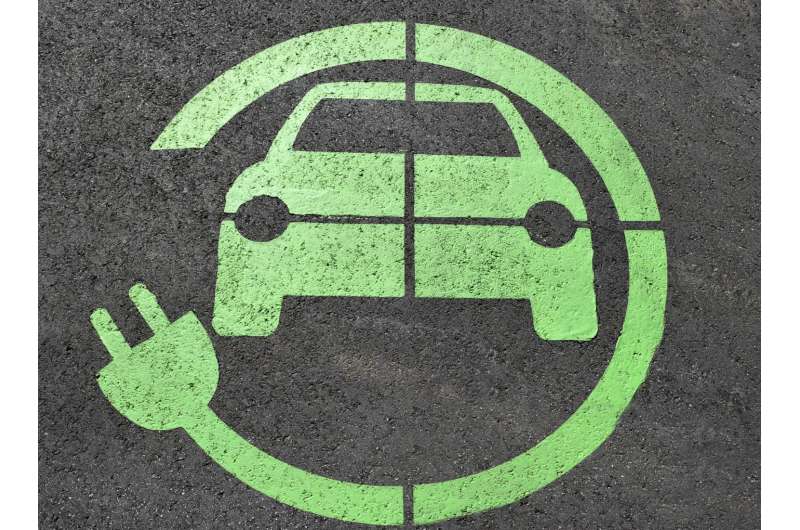New incentives could electrify the car market, but old roadblocks remain

The passage of the Inflation Reduction Act boosted incentives for car-hungry Americans to buy electric vehicles. For the next ten years, electric vehicle buyers will continue to get up to $7,500 in tax credits toward new cars, while used EV purchases will be eligible for $4,000. The fine print is extensive. The source of the parts, point of assembly, vehicle price, manufacturer, and the potential car buyer’s income all factor into the EV equation.
Hovig Tchalian is an assistant professor of clinical entrepreneurship at the USC Marshall School of Business studying the way new technologies impact the processes of market emergence. We spoke with him about how incentives might affect the EV market at a time of high gas prices and supply shortages.
What is the current status of the EV market?
(The electric vehicle) is one of those product categories that’s taken a long time for people to get used to, so it’s fragile. Rising gas prices have spiked demand recently, but it’s been a nascent market for a long time: It’s been the next big thing for a hundred years. If you go back to the ’90s, the GM EV-1 was supposed to break through. Then it was the Nissan Leaf. Then it was Tesla.
A lot of manufacturers followed Tesla in the early 2000s aiming at the higher end of the market. These vehicles cost more to make.
Also, in the early 2000s they marketed them as sports cars, not EVs. “These are really fun to drive, and your neighbors will gawk at you for having the first one on the block. It happens to be electric, which just makes it faster. Zero to 60 in under four seconds. Go buy one.” They’ve now tried to move downmarket because you can’t do that forever. But it is fairly expensive to get the technology right, to get these things to work.
Now we’re at double digit demand for EVs globally, but for the longest time it was stuck at one or two percent.
Maybe we’re at an inflection point, where incentives matter even more. I appreciate that policymakers are actually trying to do something about this, but it’s very difficult to get it right.
Will the incentives included in the new bill mean more electric cars in consumers’ driveways?
That’s something economists will debate. Generally, it will push it up. The question is how much. It’s less a question of simply giving people incentives. It’s more that several things have to line up. Think about how you and I make buying decisions for cars. The questions we ask. Is it going to get the right fuel economy? Do I look cool driving it? Can I afford it? It’s not just the price.
Incentives solve one part of the EV puzzle, but you still need to solve the other: adoption.
For most car buyers, EVs are unfamiliar. There’s anxiety about range, the number of charging stations and the time it takes to recharge. There were some recalls. The earlier Tesla models had a transmission issue.
If I show you a new electric, self-driving car that has risks, you’re much less likely to adopt unless you’re one of those people who stand in line for hours to get the latest Apple product. People still have doubts. A rebate or incentive doesn’t change that.
A lot of this is behavioral. It’s not so much the economics alone or the infrastructure. It’s asking people to change their behaviors. The more you ask people to change their behaviors the more difficult it is for these technologies to get adopted.
Car buyers are paying an average of $54,000 for an EV. How do high EV prices factor into the equation?
It’s difficult for somebody who is making $30,000 or even $50,000 a year to buy one of these. The economics don’t necessarily work out.
What will hold back the overall impact of the incentives is the amount they offer in relation to the price. If it’s going to cost you an extra $2,000 to buy an electric car and you get a $2,000 rebate, the incentive has zero effect.
Is pricing as easy as subtracting the incentive from the sticker?
There’s confusing messaging and ongoing changes. For instance, there are multiple rebates—especially in California. Not all vehicles qualify. It’s not just about where the parts are made.
Once a manufacturer produces 200,000 units—such as Tesla or GM—they no longer qualify for federal incentives.
It throws a bit of a wrench in the works when people are trying to buy. There’s enough for people to worry about when they adopt an EV: It’s unfamiliar, it’s unusual and they have range anxiety about running out of charge. You have to go to a different mechanic. People are afraid they’ll get stuck without a charge driving to work.
Do you drive an EV?
We bought a used 2013 model a few years back. New, it sold for $32,000. We picked it up four years later with 25,000 miles on it for $8,000. It was an earlier model. The range was only 65 miles. The battery started to go so we eventually had to give it up but we’re looking at possibly getting another EV.
Electric vehicle buyers want rebates, not tax credits
Citation:
New incentives could electrify the car market, but old roadblocks remain (2022, August 26)
retrieved 26 August 2022
from https://techxplore.com/news/2022-08-incentives-electrify-car-roadblocks.html
This document is subject to copyright. Apart from any fair dealing for the purpose of private study or research, no
part may be reproduced without the written permission. The content is provided for information purposes only.
For all the latest Technology News Click Here
For the latest news and updates, follow us on Google News.
